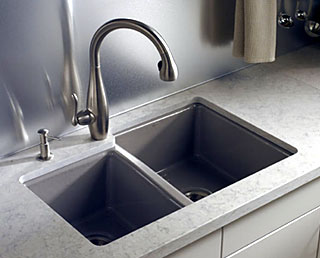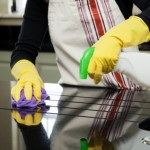How to Clean your Kitchen Sink
Instructions
-
1
Regular Cleaning
Regular cleaning of your kitchen sink should be done when the sink is empty and devoid of any dishes or foods. Spray the entire sink area with either a soap, glass cleaner or a multi purpose cleaner. You should always ensure that the cleaner is appropriate for your sink material and finish.
Scrub the entire sink surface, tap (faucet) and area around the sink using the aforementioned cleaning solution and a soft sponge or wash cloth.
Always wipe the cleaned area with a soft, clean and dry cloth to avoid spotting. -
2
Spots, Mineral Deposits and Stubborn Messes
Water spots and deposits caused by minerals can be easily taken care of with a mixture of equal parts white vinegar and distilled water. Simply soak a soft cloth in the solution and wipe the effected areas thoroughly. This will treat naturally and quickly.
For more stubborn messes, add 1-2 tablespoons of baking soda to your solution. Baking soda acts to remove stains. Rub the stained areas after spraying with a sponge. You may need some elbow grease to get the job done. -
3
Regular Cleaning
Kitchen sinks should be cleaned as often as possible for long-term appearance as well as sanitary reasons. Acids and minerals in foods can ruin your sink's finish and leave it missing its lustre after some time. The more often you clean, the better it is for you and your sink. -
4
Try to Avoid
For metal and steel sinks and taps, you should avoid cleaners with bleach, ammonia, and abrasive cleaners as these can cause damage. Also, avoid using steel wool and other abrasive sponges that could ruin your sink's finish.








